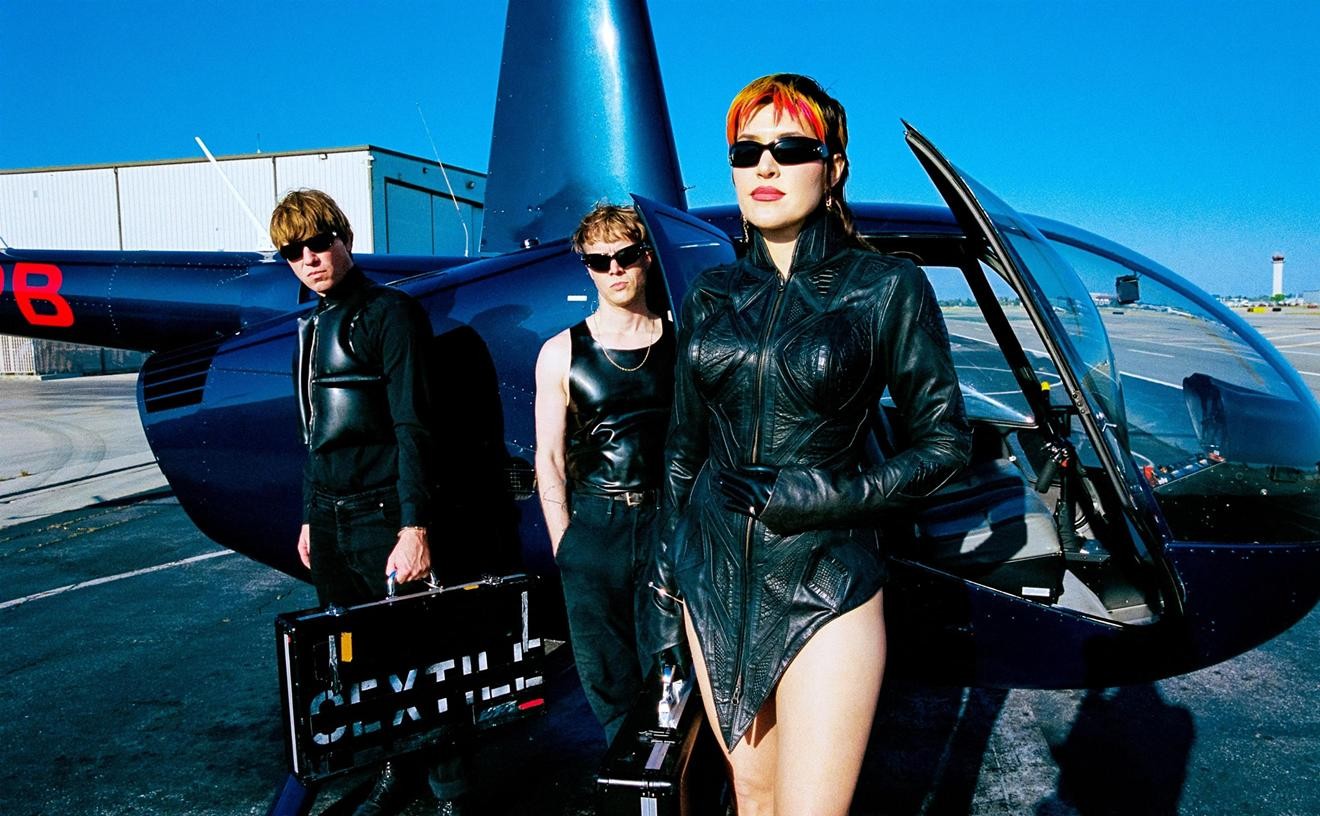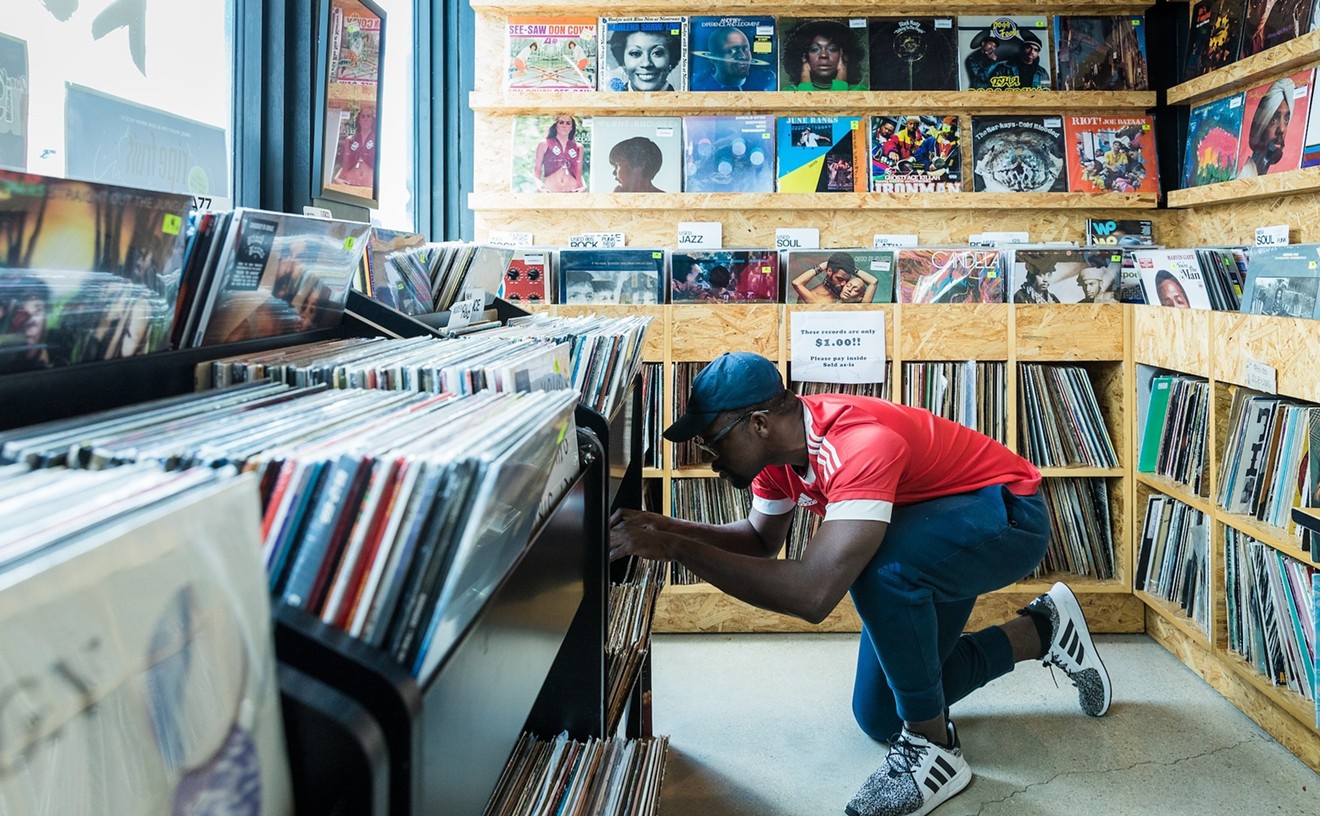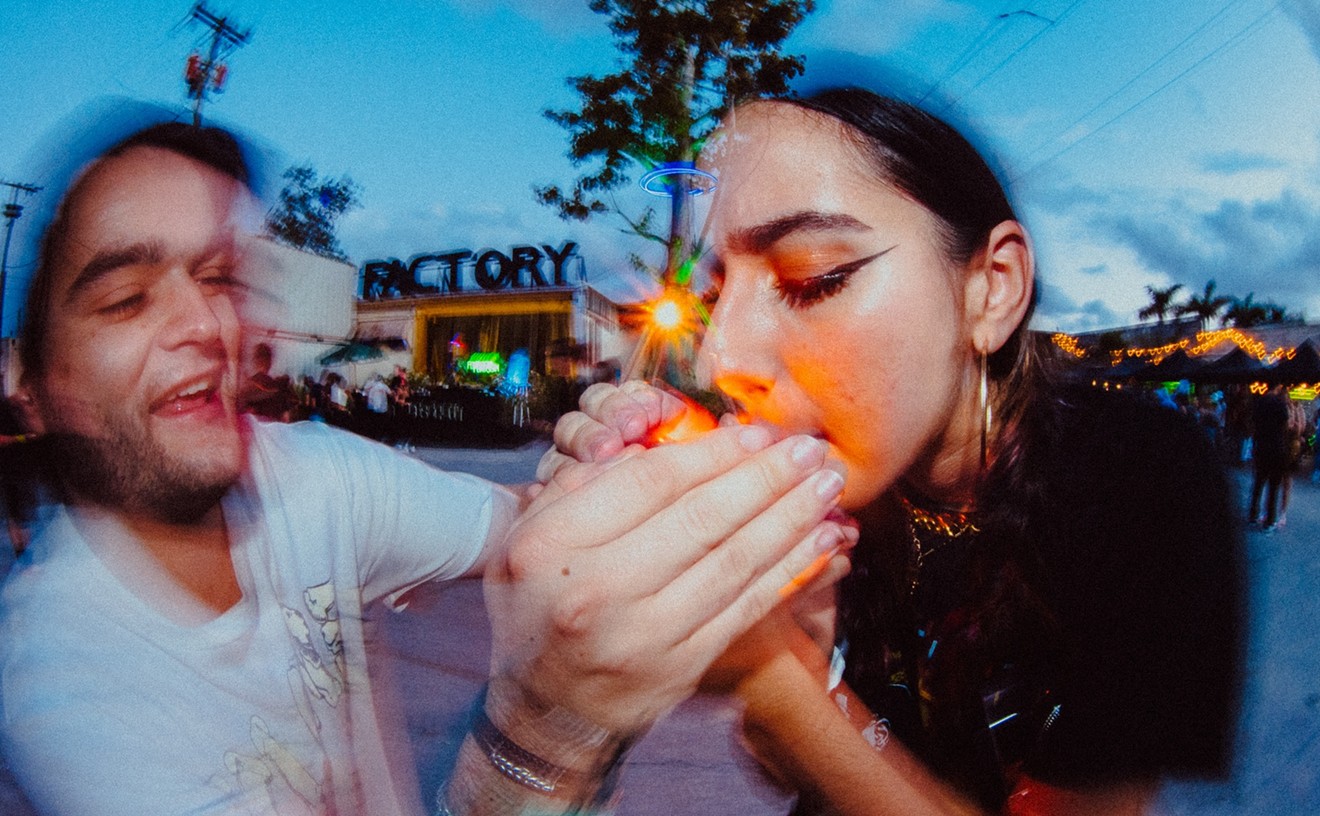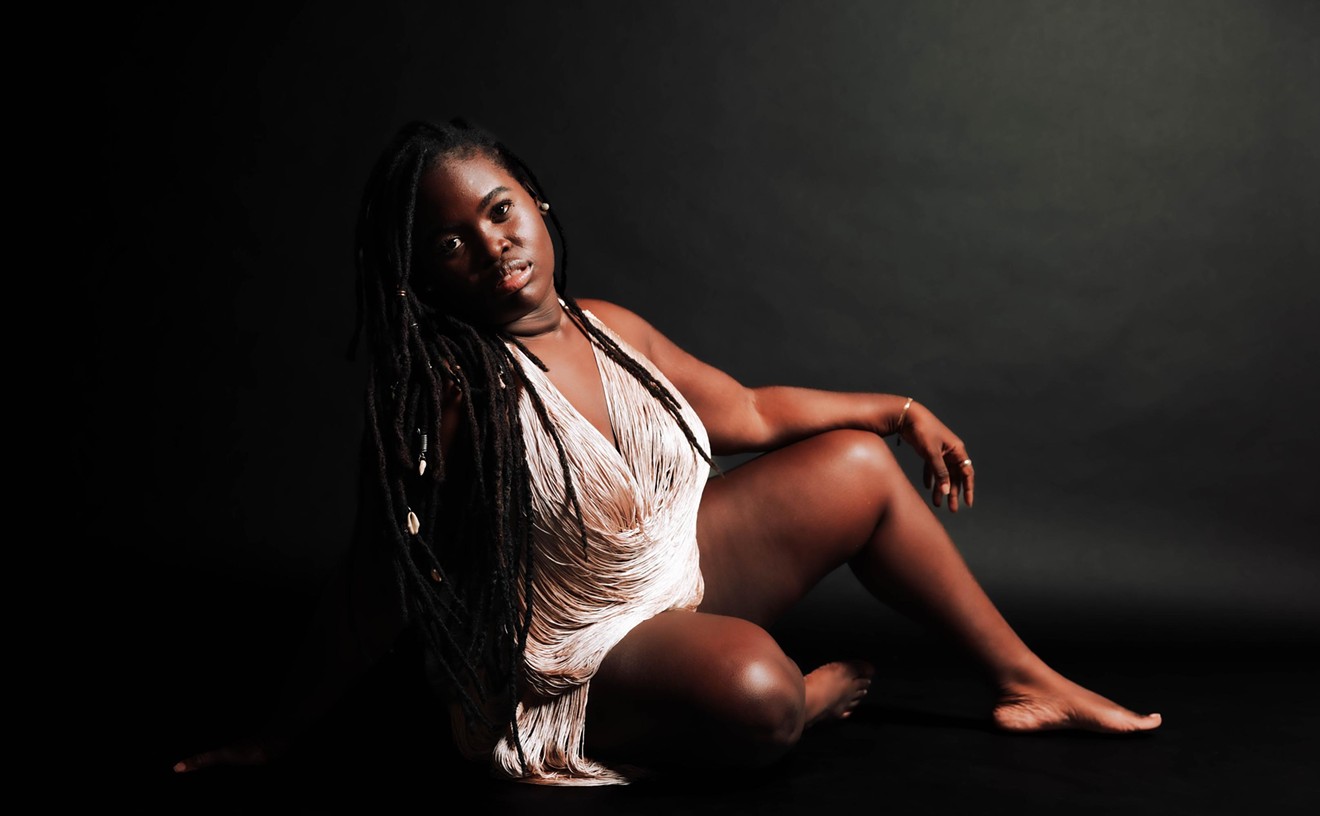Pepe Horta made that sobering discovery when he came to Miami from Havana in 1994. Right away, he saw what was missing.
"The Cuban custom is to go from one club to another throughout the night, but to always end up in a place to jam," relates Horta, who opened Cafe Nostalgia last year. "I realized that that kind of club didn't exist in Miami. I was convinced that a place like that -- where there wasn't a show, where there wasn't a star, where there were just good musicians -- would succeed."
As the best clubs usually are, Cafe Nostalgia is a hole in the wall -- crowded with cocktail-size tables, hung with a thick haze of smoke, and so dark that the waiter hands you a tiny flashlight along with the drink menu. Horta, formerly the director of the International Havana Film Festival, has a collection of performance footage by Cuba's musical greats that plays on a screen over the small dance floor. It's common to see older couples dancing ecstatically in front of images of Beny More singing in Fifties Havana, lost in that particular Cuban twilight zone created by long-time exile and embargo.
While the clips infuse the club with nostalgia, it's the live music that gives the place its vibrant soul. In little more than a year, Horta has succeeded in maintaining a consistent venue in Miami for Cuban music with the ambience of a come-as-you-are hangout rather than a Vegas showroom. But like every good secret, Cafe Nostalgia is not a secret any more. The word is out in Miami and beyond. Horta can now reminisce about the nights when U2's Bono and more recently, politically conscious salsero Ruben Blades, dropped by. Or when singer Miguel of the legendary early Sixties Cuban doo-wop group Los Zafiros climbed off his bar stool and onto the Nostalgia stage, ending his decades-long retirement.
"Every night so many musicians come that it starts to look like a symphony orchestra," asserts a delighted Horta. "A rumba symphony orchestra."
The rumba gets started early in the evening with the Grupo Nostalgia, a pick-up group that started as a trio and now is holding steady at six members: bassist Omar Hernandez, flautist Rene Lorente, vocalist/percussionist Luis Bofil on gYiro, keyboardist Eduardo Rodriguez, Eddy "Conga" Jimenez on drums, and vocalist/maraca shaker Rockingcha. They range in age from their mid-twenties to over 50. Rockingcha and Eddy Conga, who have been in Miami the longest, arrived in the early Eighties. The rest have come more recently. None of them had been able to find a steady job playing music when Horta recruited them for his club.
The traditional Cuban sextet, formed to play son (the quintessential Cuban dance music), consists of guitar, tres, bass, bongo, maracas, and claves. Grupo Nostalgia is a more eclectic, postmodern configuration -- a conglomeration of musicians of various backgrounds who apply their stylistic salmagundi to traditional Cuban songs.
"People are used to salsa, but we show them that Cuban music is something more," says Bofil, who, early on a Sunday evening, is sitting with some of the other band members in the club's dressing room (actually part of a hallway behind a door at the back of the bar). A cabaret performer in Cuba, the singer emigrated in 1991 to Germany, where his band played covers of Latin American folk and rock protest songs. He came to Miami in 1994 and found the occasional job singing salsa before joining Nostalgia. "Cuban music is a danzon, a son, a guajira, a bolero," he explains. "We can suddenly go from a bolero into a cha-cha-cha. We're giving people a broad musical education. Your average American puts all of this music in one basket. But it's really many different baskets."
A typical Grupo Nostalgia set might start off with a faithful rendition of Miguel Matamoros's "Son de la Loma." Once they've got the crowd going (i.e., when the dancers' booties are bumping up against the band's microphones) the musicians start dropping out for alternate solos. They roll the song over and over, then segue into the Afro-Cuban conga beat of a rumba, parlay that into a slow, pelvis-grinding bolero, and double back into "Son de la Loma." They might continue with a campy "homage to the maracas" with Rockingcha -- the resident showboat -- puffing his barrel chest out like a preening dove and waving the gourds about madly, as if casting a spell. Late into the night, the group always plays a conga, and band members and club employees, holding straw brooms covered with foil paper and tinsel, lead a line in a circle around the room, ending in a frenzy on the dance floor. Typically, after midnight, other musicians carrying instruments start arriving: members of Albita Rodriguez's group, after their gig at Yuca; visiting Cubans from Mexico, New York, or Havana. The descarga goes on until the early hours of the morning.
"Cuban musicians can do whatever they want with Cuban music," says Omar Hernandez. A former member of the acclaimed Afro-Cuban jazz group Afro-Cuba, Hernandez is Nostalgia's unofficial musical director and informal arranger. He is currently working on some original material for the band to start performing in addition to the current repertoire of perennials and standards. "We can mix Cuban music with rock, with African music, with pop, with jazz, but it's always going to sound Cuban."
Frustrated by limited opportunities and government control over musicians in Cuba, Hernandez arrived in Miami on a raft two years ago, "an oar in one hand and a baby tied to the other," as he puts it. As an artist with some prestige in Cuba, he was allowed to travel. But for the whole family to get out, they had to take the risky journey. When he got here, Hernandez was surprised by the lack of a real Cuban music scene.
"I didn't think that Miami would be like this," he admits. "There are very few places to play. Here, there are clubs to talk, where everyone wears their best clothes and drinks the most expensive liquor, and goes out in the parking lot to check out each other's fancy cars. But there aren't many places where you can go and hear real art."
Flautist Lorente, who has been in Miami for six years, was similarly disappointed. "We thought that Miami was like an extension of Cuba," he says. "But it's not that way."
Lorente is a virtuoso veteran who played with the legendary cha-cha-cha pioneers Orquesta Aragon and Orquesta America. A few years back he put together his own charanga band, Miami Aragon. It didn't last long.
"Here things are different," the flute player shrugs. "So I decided not to continue with the orchestra. This isn't Cuba. In Cuba we have a standard. It was very difficult for me to find musicians here who could really play Cuban music. There's a big difference between people who've been brought up on music made here and a Cuban who was raised in Cuba. The ones who have been here for a long time play with a swing that's very superficial. We play macho. We came a short time ago so we haven't cut our ties with Cuban music. We haven't let it get lost."
The exile community has not easily embraced artists fresh from the island who grew up under the revolution. The members of Grupo Nostalgia roundly blame the widespread commercialization of salsa music for the lack of a significantly visible presence of Cuban music in Miami.
"People think that Cuban music is salsa," says Hernandez. "Salsa took elements of Cuban music, but what salsa musicians did was establish a fixed pattern. You hear a salsa band and then you hear another and it sounds the same. And that's what the record companies want. If they have one hit, they put out another record that sounds the same and people will buy it because it reminds them of the first one. That music is never going to evolve. It's always going to be the same cowbell, the same drums. It has the flavor of Cuban music but it's reduced to just one sound, while Cuban music has so many forms."
Lorente concurs. "People here are used to hearing different elements of Cuban music, a little of this and a little of that," he says. "When people hear our music they say 'but they don't make that kind of music any more. It sounds like the past and the present at the same time.' Well, that's because we have it inside.
"People come here and they're just entranced," he continues. "It's not because the music sounds so great, really. We don't have a great sound system, and we don't rehearse. All of this is improvised. But this kind of music is dynamic. It has passion, it has energy."
Unlike the immigrant mambo kings who faded into the obscurity of wedding parties and bar mitzvahs, or melted into the New York City pot to become salseros, the members of Grupo Nostalgia have seen signs that they can be successful playing Cuban music in the United States. "The Cuban community in the United States is much larger today than it was back then," says Lorente. "We don't have to compromise the way they did."
The musicians say they've observed local Cubans' musical tastes start to change over the past few years as more and more young people have emigrated from the island, bringing contemporary Cuban music recordings with them, and as local audiences are exposed to performances by artists such as Albita. A general interest in Cuban music has also peaked over the past few years: After reissuing nearly everything they could get their hands on, some record executives are now closing in on Cuba, looking for new acts.
"It's a well known secret that our music is getting stronger and stronger internationally," asserts Lorente. "If Fidel Castro fell today, Cuban music would be invading the world."
Grupo Nostalgia will be among the bands performing at a drumming jam session organized by the Miami Light Project, tonight (Thursday) at 9:00, at Cafe Nostalgia, 2212 SW 8th St, 541-2631. Admission is free.










